A Window into the Industry Collections
, 27 Mawrth 2014
Amongst this month’s new additions to the collections we have received 16 very interesting share certificates. The Museum holds by far the largest and wide-ranging Welsh-interest share certificate collection held by any public museum, library or archive. The collection ranges across railway and maritime transport, coal mining, the mining and smelting of metals, general industry, and service industries (finance, leisure, consumer products, etc). We seek to consolidate and expand whenever appropriate material is offered.
The Royal Copper Mines of Cobre company was founded in 1835 by predominantly Swansea and Llanelli copper smelting interests who, recognising the rapidly growing importance of Cuban ore to Welsh smelting works, sought to see the mines both worked much more efficiently and on a larger scale as well as under their control rather than under inefficient Spanish colonial direction. These certificates are a rare example of tangible objects reflecting the international reach of globally pre-eminent Welsh copper smelting industry. The two strongest international connections of the industry were with Cuba and Chile, with Cuban connections being especially intimate at Swansea.
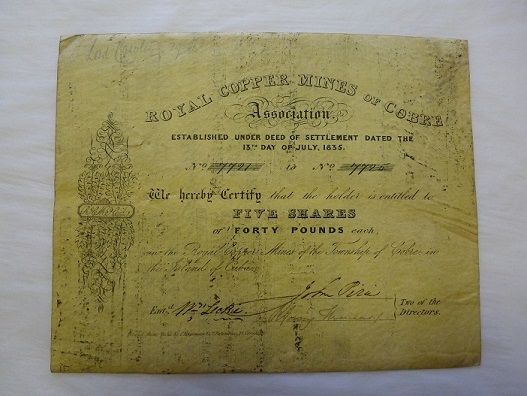
This Mynyddbach-y-Glo Colliery Company Limited share certificate dates from 1924. The company was registered 1924. It operated the colliery from 1924 to May 1926 when it when into voluntary liquidation, seemingly an early casualty of the miners’ strike which continued after the end of the General Strike. Winding up was completed in 1927. The colliery comprised a small slant located at Waunarlwydd on the western outskirts of Swansea.
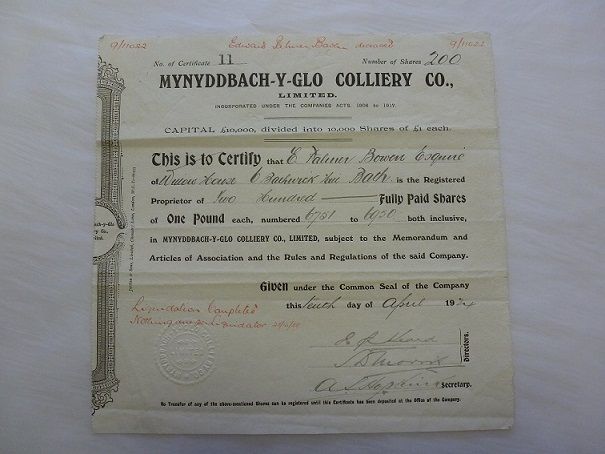
This Pontypridd Gas Light and Coke Company share certificate dates from 1852. The company was registered in 1850, and was later purchased by Pontypridd Local Board of Health under the terms of the Pontypridd Local Board (Gas) Act 1893. The Local Board became an Urban District Council in 1907 and the latter authority transferred the gas undertaking to the Wales Gas Board following the passing of the Gas Nationalisation Act 1948. Pontypridd was only the fifth Welsh town to be lit with gas, its Act creating its gas company being early by Welsh standards. At the centre is an interesting vignette of the gas works in front of the Pontypridd’s famous bridge. The bridge was built by William Edwards in 1756.

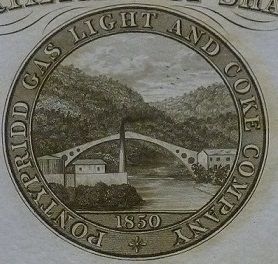
One donation this month included two commemorative ties that can be seen here. Trelewis drift mine was opened in 1954 and was adjacent to Taff Merthyr colliery. One of the ties show here commemorates 25 Years of its opening. Production ceased soon after this tie was made in 1991. The other tie commemorates 73 years of Markham Colliery which was opened in 1912. The tie was produced in 1985 during the miners’ strike. Markham colliery was to close the following year.
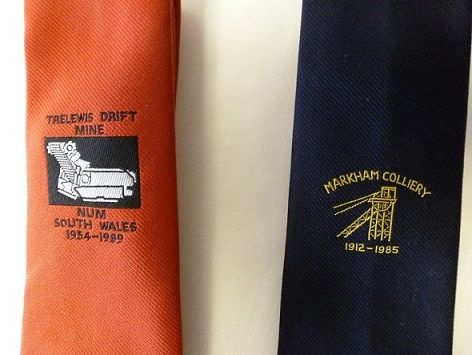
As well as the ties we were also donated two tobacco or twist boxes. These were used by miners to store their ‘twist’ (chewing tobacco). They were generally made of brass and usually oval in shape, although we have many examples of different materials and shaped tins in our collection. They are usually stamped with the miners name, address or colliery, and also often a date.
Of the two boxes illustrated here one is oval (with the date 1985 stamped underneath) and the other rectangular and in the shape of a book, with a simple combination locking mechanism underneath.

One final new accession this month is very poignant as last year we commemorated the 100th anniversary of the Sengehydd disaster in which 440 miners lost their lives in the worst mining disaster in Britain. This horse’s hoof mounted in silverplate was given to Reginald Mortimer of Standard Colliery, Ynyshir for his work with colliery horses during the disaster. It is inscribed "KILDARE" / 1ST HORSE FROM THE / SENGHENYDD / EXPLOSION. OCT. 14. 1913.
For more objects relating to the Senghenydd disaster check out our Images of Industry database.
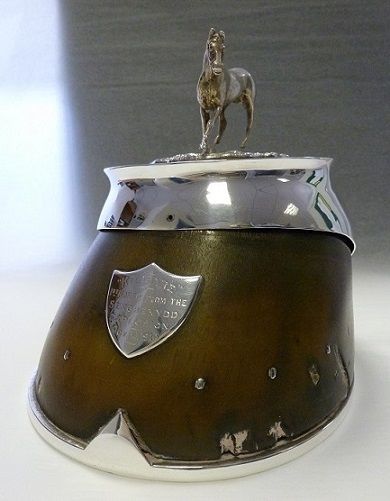
Mark Etheridge
Curatorial Assistant (Industry)
Follow us on Twitter - @IndustryACNMW
